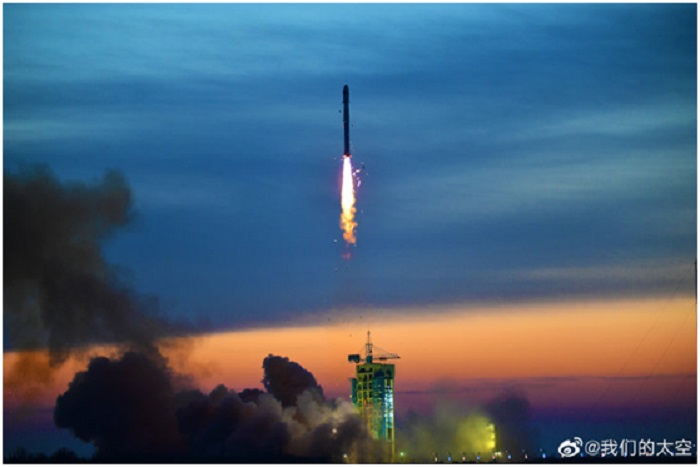



The China-developed Long March carrier rocket series completed its 400th launch as a Long March-4B rocket successfully sent a new group of satellites into space on the morning of Dec. 10. It marked another milestone in the history of China’s aerospace development.
The Long March series boasts world-class launch success rate and orbital insertion. According to Long Lehao, academician of the Chinese Academy of Engineering and senior advisor for the development of the Long March carrier rocket series from China Academy of Launch Vehicle Technology, the Long March carrier rocket series carried out 92.1 percent of China’s space launch missions between 1970 and 2021, sending more than 700 spacecraft into space, with a launch success rate of 96.25 percent.
In the 400 launch missions by Long March rockets, the first three 100 launches were completed in 37 years, 7 and a half years, and around 4 years, respectively. The last 100 launches took only 33 months. It not only proves that the frequent launches have become regular for the Long March carrier rocket series, but also mirrors the rapid development of China’s aerospace, as well as the country’s progress in science and technology and comprehensive national strength.
China’s first space station Tiangong’s core module, Chang’e-5 lunar probe, Tianwen-1 Mars probe, Shenzhou manned spacecraft, Tianzhou cargo craft, BeiDou-3 navigation satellites, and multiple others, were all sent into space by the Long March rockets amid the latest 100 launch missions. They have been playing a big part in scientific exploration and people’s livelihood.
After China started constructing its space station, the Long March rockets have sent the Tianhe core module, two batches of taikonauts, and two cargo spaceships into space.
Wang Xiaojun, head of China Academy of Launch Vehicle Technology, introduced that the new-generation manned carrier rockets and heavy-lift carrier rockets are under development as planned, which will vigorously promote China’s key space projects, including the fourth phase of the lunar exploration project, the exploration of asteroids and Jupiter, manned lunar exploration, and the first Mars sampling mission, among others.
The significantly improved frequency of launches highlights China’s enhanced space launch capacity and the self-reliant spirit of the country’s aerospace workers, said Wu Yansheng, board chairman of the China Aerospace Science and Technology Corporation, adding that the core technologies of the Long March carrier rocket series have always been securely kept in the hands of the Chinese.
With the progress of the new generation of carrier rockets, China will gain larger capabilities in entering, utilizing and exploring the space. The country’s aerospace technology will make life better and provide strong guarantee for building China’s space industry.


The Humanitarian Service Diamond Awards has.
A Chinese Company, Inner Galaxy Steel.


The Programme Coordinator, Regulatory, Compliance and.


A Non-Governmental Organization (NGO), Committee for.
The Trustfund Pensions Limited has chided.


The House of Representatives Committee on.
The China General Chamber of Commerce.


Senator Chuka Utazi who represented Enugu.


An Abuja based Legal Practitioner, Ugochukwu.


The African business community in Yiwu,.
Leave a Comment